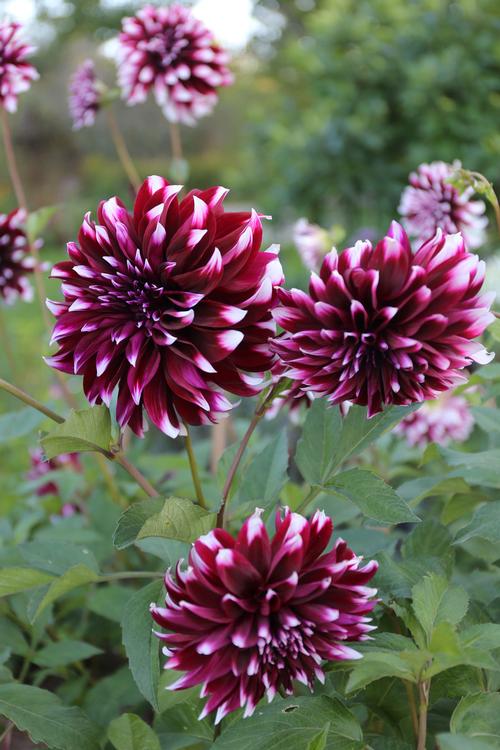Helping Dahlias Beat the Heat
Climate change is forcing gardeners to deal with many new challenges, from extreme weather events to unfamiliar pests and diseases. If you live in an area where summers are getting hotter, you may be finding it more difficult to grow dahlias. Fortunately, dahlia lovers in southern states have many years of experience growing beautiful dahlias in hot weather. Read on to get some of their tips and a list of heat-tolerant dahlia varieties.
Dahlias Like it Warm, Not Hot
Like most plants, dahlias evolved in a specific location and unique ecosystem. They are native to the mountains of southern Mexico and Central America, where summer days are warm (80-85°F) and nights are cool (65-70°F). Growing conditions in the Pacific Northwest are similar, which makes it an ideal place to grow dahlias. In areas that are warmer or have more extreme temperature fluctuations, growing dahlias requires a little more planning and attention.
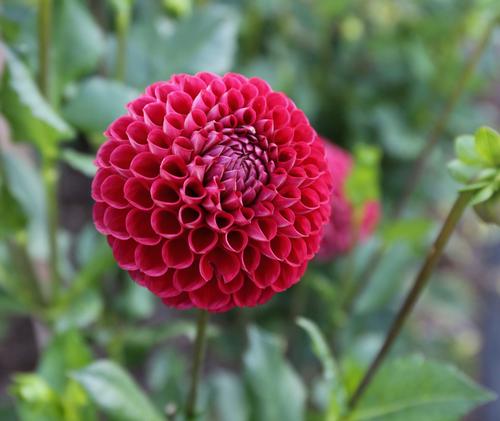
Planting Time
In hardiness zones 9 and 10, where winters are usually frost-free, dahlia growers often recommend planting in September. The tubers you receive in the spring (or divide in the spring) are stored indoors over the summer. Follow the same instructions as winter storage -- keeping the tubers properly hydrated in a cool, dark place.
Dahlia tubers that are planted in September will flower during November and December. By late December or early January, the plants will begin to yellow. When this happens, cut them back to the ground and top-dress with compost. The tubers will sprout again in February and produce a second flush of flowers during April and May. Once the weather turns hot, cut the plants back to the ground again. This is the time to divide your tubers, which you will need to do every 2-3 years. If you are leaving the plants in the ground, cover them a layer of water-permeable mulch (like pine straw) to control weeds. Let the plants rest until fall when the cycle begins again. Here are some additional tips from a dahlia grower in Orlando, FL.

Full Sun Is Usually Best
Dahlias are sun lovers and more sun means more blossoms. But if the sun is too hot, dahlias get stressed and may stop flowering. If you live in the southwest where the sun is especially intense, consider a planting location where your dahlias will get direct sun for most of the day, but some amount of shade - especially during mid and late afternoon.
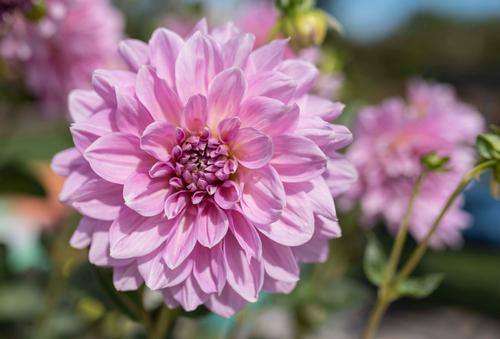
No Shade? Consider a Shade Structure
If you live in a hot, sunny climate and want to grow a lot of dahlias, consider investing in a shade structure. It's an ideal solution for yards without any natural shade. Polyethylene shade cloth lasts for many years and you can filter out as little as 20% of the light or as much as 80%. For growing dahlias, 30% shade may be a good place to start.
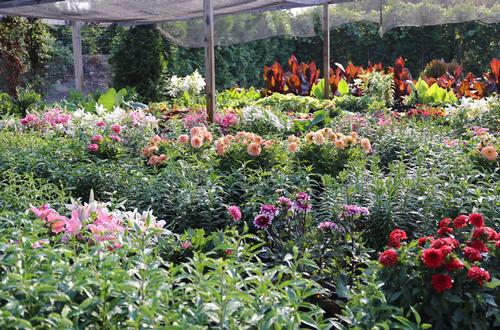
Mulch to Cool the Soil
Proper planting depth is the same as in other climates. Dig a generous hole and position the tuber so the eyes/sprouts are at the top. After planting, there should be about an inch of soil above where the eyes/sprouts are located.
Dahlias have shallow feeder roots just below the soil surface and they can extend as much as 18” in all directions. Covering the soil with 2-3” of mulch will insulate these roots and help protect them from extreme heat. Make sure the mulch isn’t thicker than 3” and that it allows water to flow through into the soil. The best time to mulch is early July -- once your plants are growing strong and before it gets too hot.
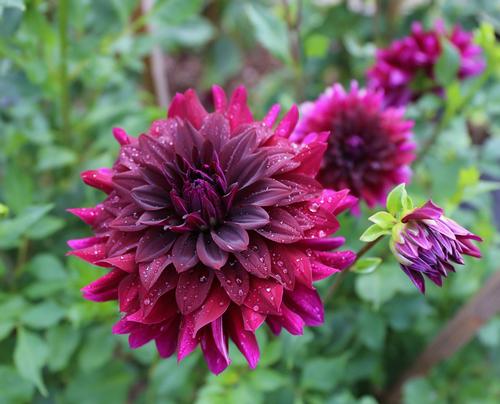
Provide Good Drainage and Lots of Organic Matter
Dahlias love growing in rich soil that is loose and crumbly. At the beginning or end of every growing season, enrich the planting area with compost, shredded leaves or rotted mature. Loose, humus-rich soil encourages strong root growth. It also absorbs and retains moisture so it's available to your plants when needed.
Well drained soil is especially important in areas that get heavy summer rains. Soggy soil suffocates dahlia roots, inhibiting healthy growth and can cause the tubers to rot. If the soil in your yard is heavy and poorly drained, or you have frequent heavy rains, consider growing your dahlias in raised beds. The deeper the beds, the better. 10-12” sides are ideal. Filling these beds with a blend of compost and a soil-less growing mix will ensure excellent drainage.
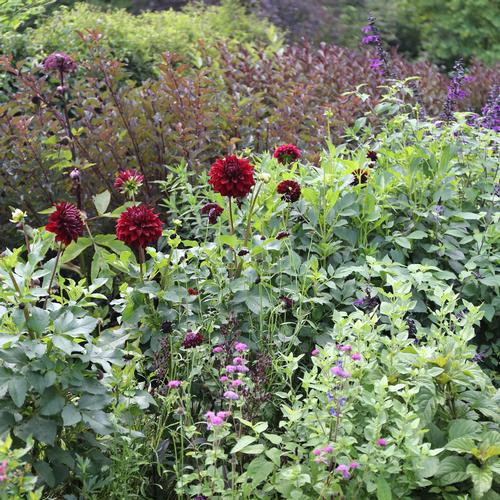
Water Wisely and Consider Drip Irrigation
If natural rainfall is inadequate, the best approach is to water your dahlias deeply once or twice per week. Drip irrigation is ideal for dahlias. If you are hand watering, water slowly and deeply right at the soil level. Avoid wetting the foliage as this can encourage powdery mildew.
Though dahlias need consistent moisture, they will not tolerate soggy soil. This can be a challenge in tropical climates with wet summers. In these areas, it's best to plant dahlias in raised beds or containers. Always use a high-quality growing mix, amended with compost. If possible, provide some shelter from heavy rain.
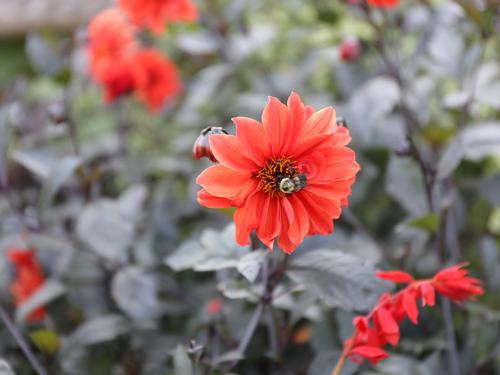
Mist On Hot Days to Keep Dahlias Cool
Some dahlia growers in hot climates, including Florida and Australia, use water to cool their plants on hot days. You can install a misting system or just use a watering wand to spray the foliage once or twice a day. This extra moisture means the plants don’t need to work as hard to stay cool.
Feed Your Plants to Keep Them Strong
Hot climates are stressful for dahlias, so it's extra important to feed them well. It's more difficult for hungry plants to be strong and resilient. At planting time, incorporate a 5-5-5 fertilizer, following package directions. Using a time-release fertilizer such as Osmocote is another option.
Dahlias are heavy feeders. Even in good, nutrient-rich soil, they usually benefit from a monthly application of water soluble fertilizer. Begin fertilizing when the plants are 6-12" tall. Once they start to bloom, you can fertilize as much as every two weeks. Use a water soluble fertilizer formulated for roses or tomatoes. Some dahlia growers recommend using a low or no-nitrogen organic fertilizer such as Alaska MorBloom. Foliar feeding with compost tea and/or liquid seaweed can also help strengthen the plants and make them more resistant to disease and stress
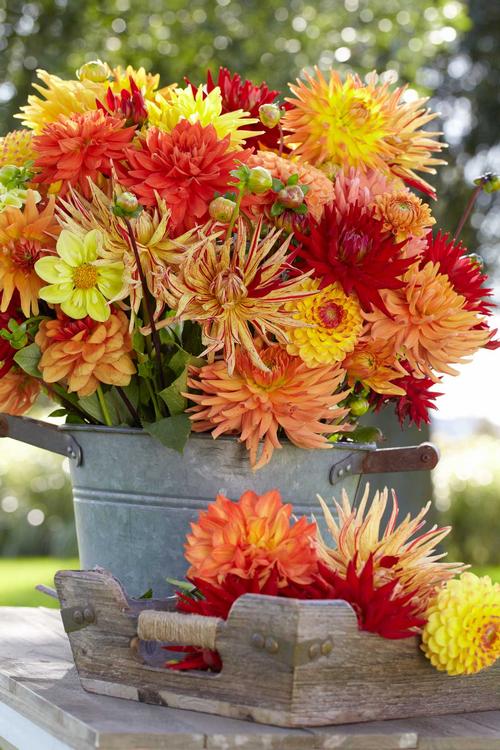
Grow Heat-Tolerant Dahlia Varieties
Gardeners in Georgia, Alabama, Texas and other southern states have found that some dahlia varieties tolerate heat better than others. Ball dahlias tend to be the easiest to grow and dinnerplates the most challenging. The list below was gleaned from a number of different sources.
Akita, Babylon Red, Ben Huston, Belle of Barmera, Bishop of Llandaff, Blackberry Ripple, Cornel, Cornel Bronze, Ferncliff Copper, Hamari Gold, Kelvin Floodlight, Kidd’s Climax, Lady Darlene, Lavender Perfection, Maarn, Mingus Alex, Otto’s Thrill, Penhill Dark Monarch, Penhill Watermelon, Pooh, Rip City, Sandra, Senior Ball, Show N Tell, Spartacus, Tartan, Thomas Edison, White Perfection, Winkie Colonel, Vasio Meggos, Zorro
If possible, ask around and get recommendations from local gardeners. You may find pass-along varieties that have proven to be particularly good for your region. An alphabetical list of heat-tolerant dahlias, recommended by members of the Dahlia Society of Georgia can be found HERE.
